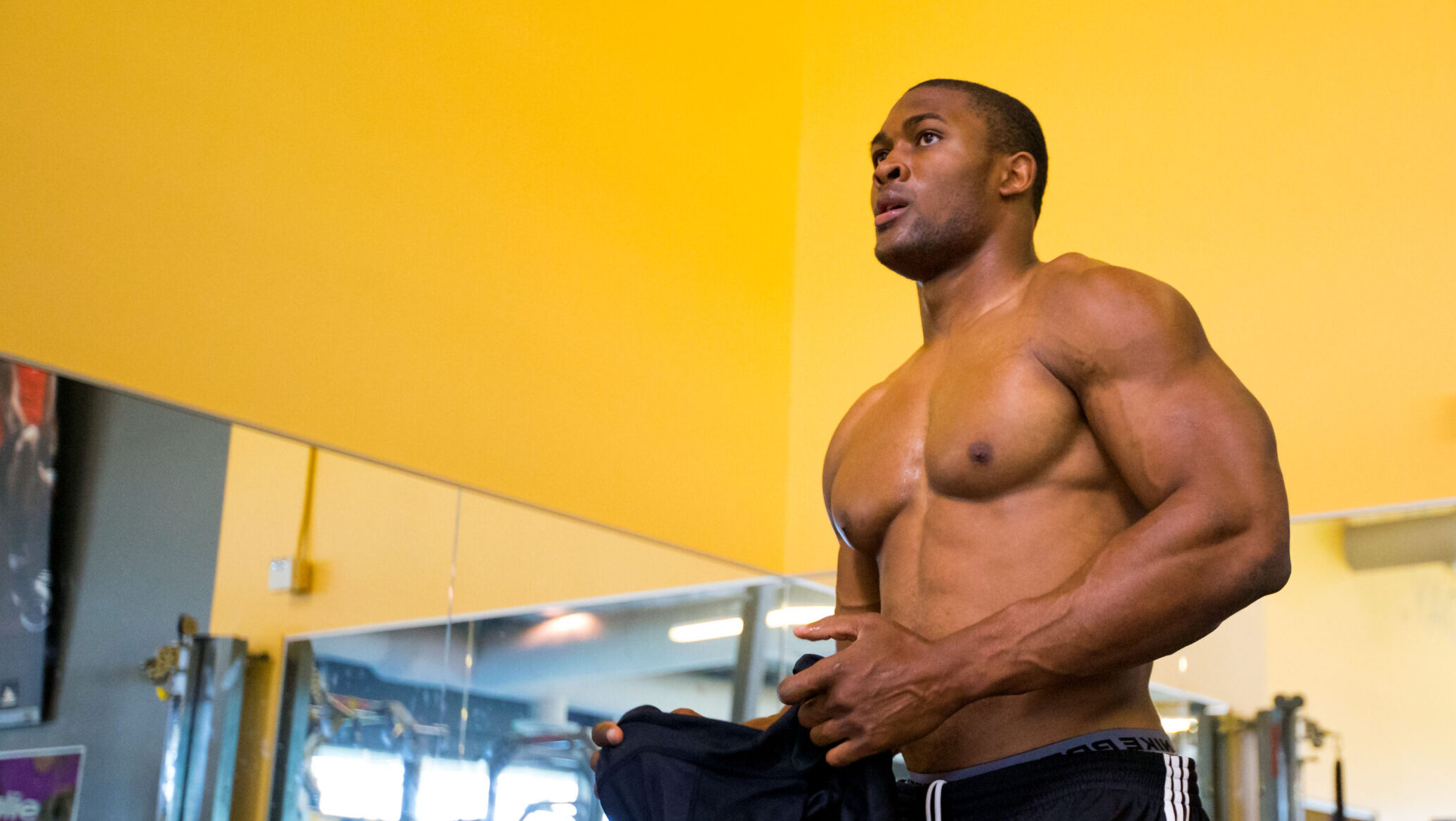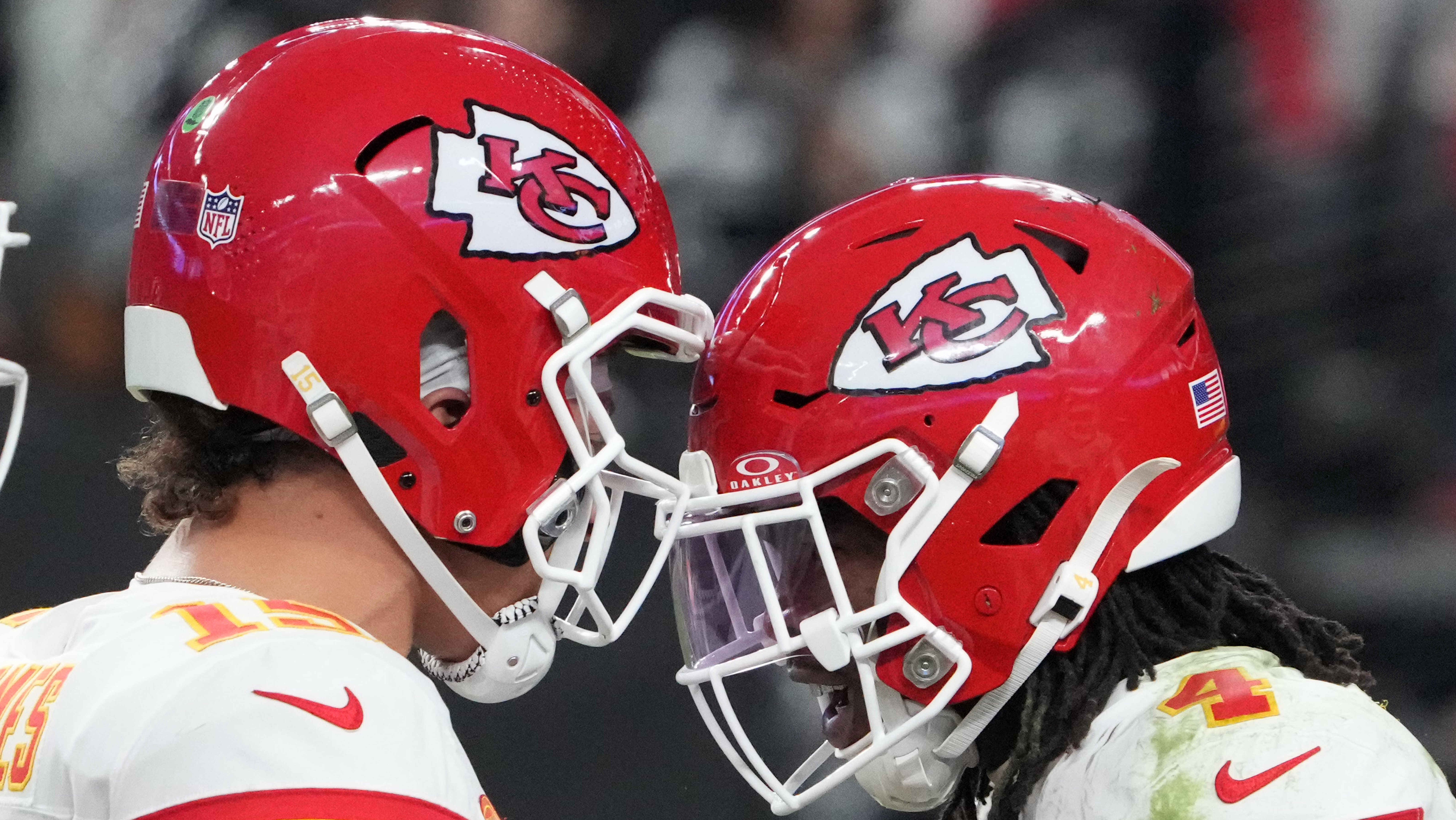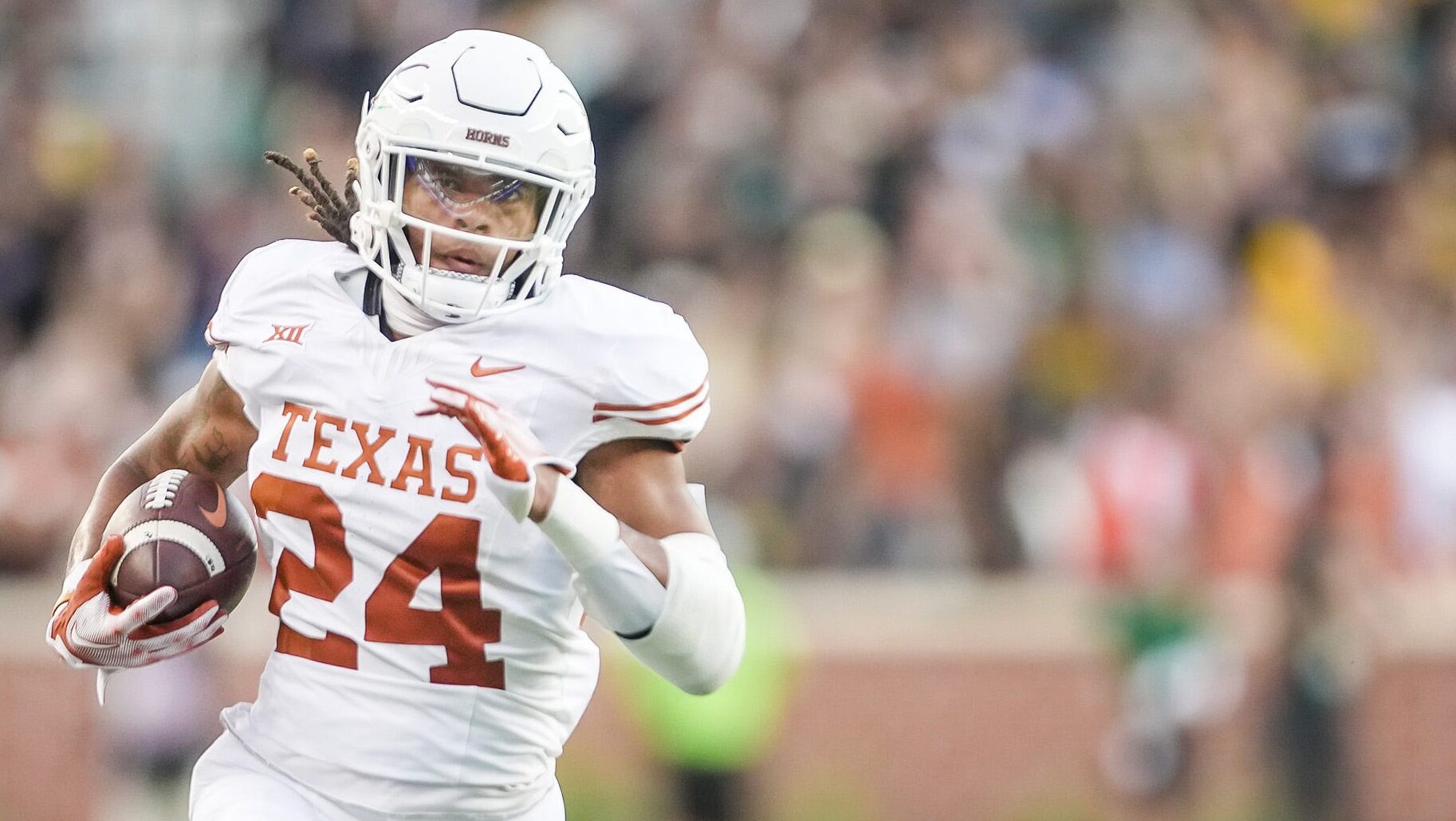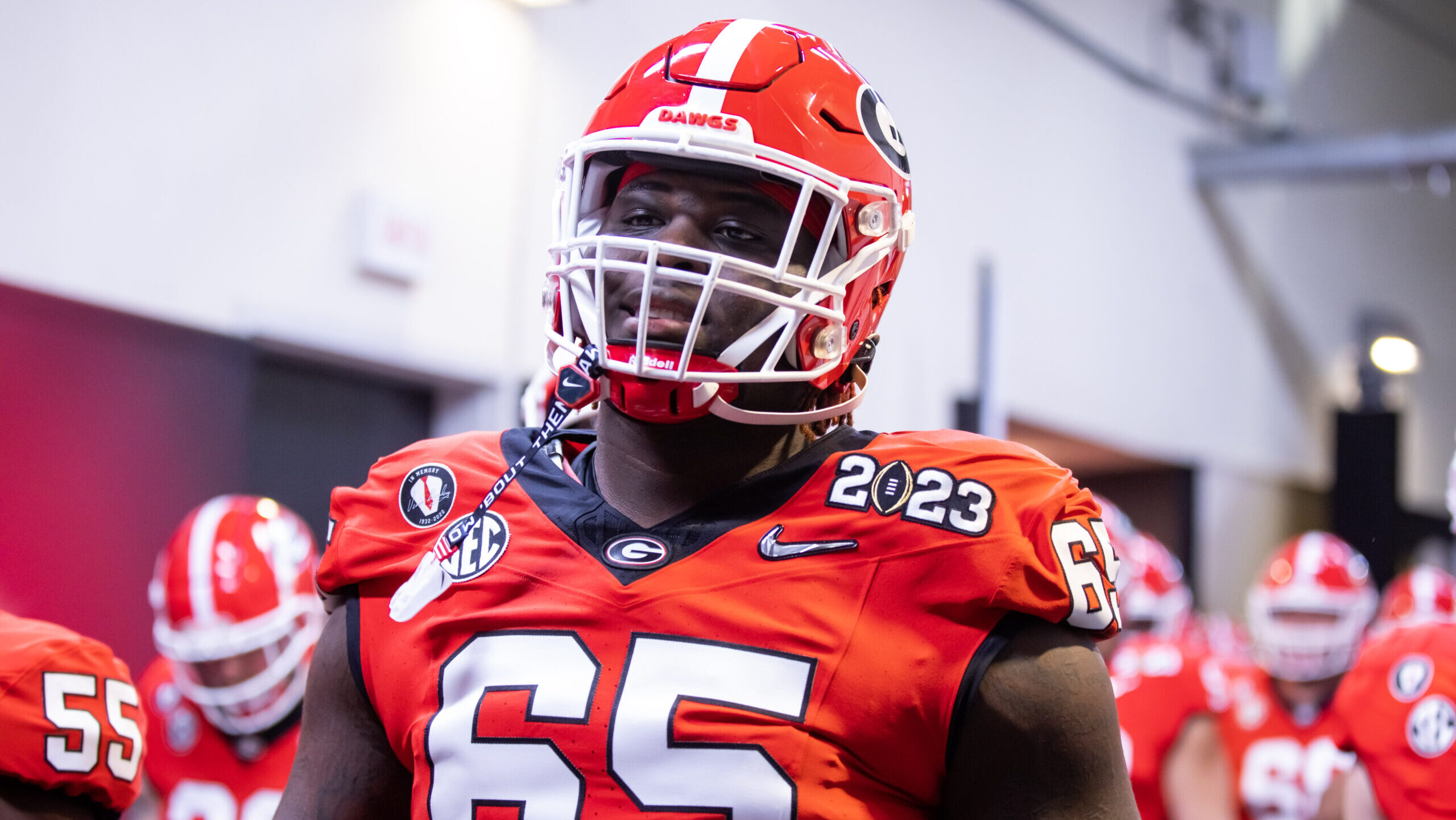Analysis
3/17/22
7 min read
The Ideal Cap Hit For a Super Bowl QB is Lower Than You May Think
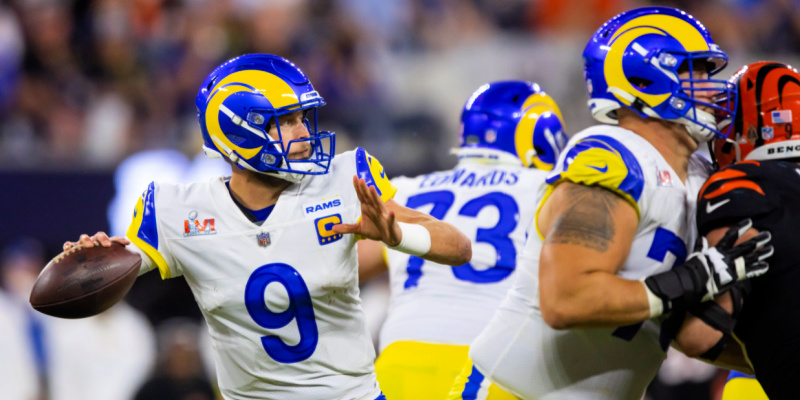
If for some reason you needed a reminder of the importance of the quarterback position, the NFL provided it in emphatic fashion as the offseason kicked into high gear.
Between the blockbuster trade of Russell Wilson, Tom Brady's spectacular return and the influence that has had on the Tampa Bay Buccaneers' ability to retain free agents, and the confirmation of the numbers of a contract for Aaron Rodgers that will pay him $50 million a year annually, the value of having a top-tier quarterback has once again been reinforced.
That scarcely required reaffirmation came after a season in which the Los Angeles Rams' all-in bet on Matthew Stafford – and a host of other highly-paid stars – was vindicated with a Super Bowl championship.
The Rams pushed their chips into the middle of the table with Stafford and won. While they were aggressive, their success was in keeping with a 21st-century trend in the NFL in that Los Angeles lifted the Lombardi Trophy while spending a lower percentage of its salary cap on Stafford than many perhaps thought.
Indeed, when it comes to teams that end the season competing for the grand prize, there is a well-established limit to how much of the cap is spent on the premium position in the game.
Cap figures courtesy of OverTheCap.
Stafford proves a steal
Stafford was not exactly playing at a low number in 2021, yet, with a base salary of $9.5 million and an overall cap number of $20 million, the Rams enjoyed an upgrade at quarterback for a cost that is now considered extremely reasonable.
His salary ranked ninth overall among quarterbacks, but Stafford accounted for 10.96 percent of the Rams' total cap.
That will jump to 11.4 percent in 2022, when his cap number will be $23 million, but history suggests such an increase will not prohibit Los Angeles from making a run at a repeat.
The highest cap hit for a Super Bowl-winning quarterback since the turn of the century came in 2020 when the Tampa Bay Buccaneers prevailed with Tom Brady playing under a cap number of $25 million, which amounted to 12.61 percent of their cap.
Stafford and the Rams are not close to a point where the data indicates his cost would become restrictive to their hopes of contending for the Super Bowl again, but the percentage of Los Angeles' cap that was spent on him last year was well above the average for Super Bowl-winning quarterbacks since 2001.
The average cap number for title-winning signal-callers in that time is $9.81 million. In terms of share of the cap spent on a quarterback, 7.47 percent is the sweet spot across the past two decades, with just seven Super Bowl champions using at least 10 percent of their cap on the man under center.
In other words, most of the teams that made it all the way and prevailed found a middle ground, obtaining a top-flight quarterback but not at an onerous cost, that balance further illustrated by the average quarterback salary rank for Super Bowl winners – 16th.
It is a similar story for the franchises and quarterbacks to progress to the biggest stage but fall short.
Rule of 14
Super Bowl runners-up since 2001 have spent an average of 7.17 percent of their cap on the quarterback. The average quarterback salary rank for those teams is just one spot below that of victorious franchises, 17th, with the cap number for the signal-callers to fall at the final hurdle just under $600,000 less than that of the winners at $9.28 million.
Of that group, only two quarterbacks Peyton Manning (in 2009 – 17.24% and 2013 – 14.16%) and Matt Ryan (2016 – 15.3%) accounted for more than 14 per cent of their team's salary cap.
With neither lifting the Lombardi, the numbers send a clear message. If you want to maximize your hopes of winning the Super Bowl, it is best to have a top quarterback, but ideally not at a price above 14 per cent of your cap.
An examination of the last 20 Super Bowl quarterback matchups also supports the notion that a quarterback on a rookie contract is the best asset a team can possess.
Six of the last 10 Super Bowls have featured at least one quarterback on a rookie deal, while three of the last four runners-up have started a quarterback on their first contract. Joe Flacco (2012) and Russell Wilson (2013) each won the Super Bowl on their rookie deal, as did Patrick Mahomes in 2019.
Nick Foles was the unlikely hero for Philadelphia at the end of the 2017 season, but much of the work to get the Eagles in position to contend for a Super Bowl had been done by Carson Wentz, who prior to his knee injury had enjoyed what is still the finest campaign of his career, on a rookie contract.
Few quarterbacks on a rookie deal arrive and immediately elevate everyone around them, and a quality supporting cast of course carries a substantial amount of importance to teams looking to contend with a young quarterback.
Yet there is mounting evidence to suggest that, once you have the face of the franchise identified and he is signed to his rookie deal, you are in your window, and such thinking applies to several teams whose quarterback cap numbers figure to aid their cause in 2022.
Cost-effective contenders
After failing to finish the job against the Rams, the Cincinnati Bengals head into 2022 knowing this is likely the last year of a window before Joe Burrow gets expensive.
Burrow and Trey Lance, whom the San Francisco 49ers will hope can elevate the Kyle Shanahan offense to another level, stand out as the obvious candidates as cheap quarterbacks with a legitimate opportunity to end the season on top, while the Los Angeles Chargers' offseason moves will only heighten optimism this could be the year they capitalize on his rookie deal.
Yet most of the teams anticipated to contend also fall well within the 14 percent limit, including Green Bay and Rodgers, the man set to earn over $200 million over the next five seasons if he plays out the entirety of his deal.
Rodgers, who accounts for only 13.2 percent of the Packers' 2022 cap, would break new ground in surpassing Brady's 2020 high were he to finally get a second ring next season.
That would not be the case with the Broncos and Wilson, who will be paid just 10.9 percent of Denver's cap. Meanwhile, none of Mahomes, Josh Allen, Dak Prescott, or Brady make up more than 8.2 percent of their team's cap.
By contrast, Kirk Cousins' salary is one of the many reasons why it is risky to trust the Vikings in 2022. The contract one of the NFL's great quarterback earners worth 15 percent of Minnesota's cap this year.
Whoever eventually ends up taking on the risk of trading for Deshaun Watson may want to follow any deal with a hasty restructure. With a cap number of $40.4 million in 2022, Watson's salary is responsible for 18.8 percent of the Houston Texans' cap, well beyond the threshold for making the Super Bowl in the last 20 years. His cap hit will lower to $35 million once he is traded as his signing bonus prorations will remain on the Texans' cap, but his salary will still account for 16.8 percent of the cap of the team that acquires him.
Following the events of this offseason, it would be fair to question whether there is any price too high for a starting quarterback with the skill set to deliver the title.
Though the Packers gave Rodgers a history-making deal to keep him around and the opportunity cost in terms of draft capital was high for the Broncos to acquire Wilson, they each avoided paying out 2022 salaries worth more than 15 percent of their cap.
Both Green Bay and Denver stayed within that limit even while making offseason-defining moves. The test case, should he land with a team set up to contend like the Cleveland Browns or the New Orleans Saints, will be the next one that follows with Watson.
A Watson Super Bowl win in his first season in pastures new could convince teams to be more aggressive with what they are willing to give up for a quarterback and the percentage of their cap they are prepared to pay him. However, going off the last two decades, such a triumph would likely prove an exception rather than a change to the 14 percent rule.

